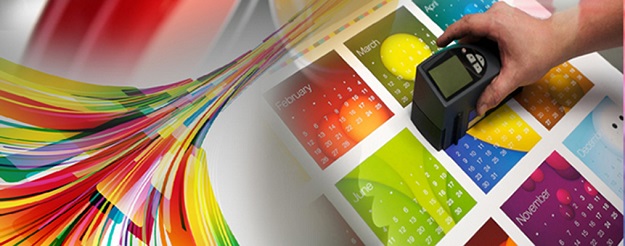The world of print is more competitive than ever, so a digital design must produce consistent results and know the ins and outs of the industry by heart.
That goes especially true for print designers – today, it’s important to have in-depth knowledge about the printing process itself if a designer wants to be able to meet the demands of the market and ensure that his work delivers the desired outcomes.
At the very least, any competent designer has to know the basic printing terms that are part of everyday language in order to understand how to best approach his design projects and assignments.
To get you started, here are a few of the most important terms that every employee must know by heart to survive in the industry.
Digital Printing
Digital printing is a popular method for printing that uses a digital source file for producing the prints. It’s used in most consumer-grade printers as well as commercially because it’s one of the most practical ways to print almost anything.
A lot of traditional printers still rely on plates, but digital printers have one huge advantage – they take a fraction of the time to set up, meaning that adjustments can be made on the fly.
That also makes it much more cost-effective, which is an essential factor in a time when printing budgets are often limited.
Finally, just as with 3D printing technology, digital printing allows for much more flexibility – it’s now becoming possible to print out on various unusual materials such as vinyl, fabric, or even plastic.
Don’t Miss –
How to Find Beautiful Canvas Prints for Your Wall Art
How 3D Printing Can Change Manufacturing
DPI
DPI, or dots per inch, is a measure of quality in print – as the name implies, it measures the numbers of dots of ink that appear in a single inch of the print.
While a higher number of DPI means better quality, it also has its drawbacks – as you can image, higher-DPI printing uses a lot more ink, so it’s essential to balance the quality with therequirements of each job to make sure that it remains cost-effective.
Crop Marks
Sometimes, printers will fit a few prints on a single sheet of paper, especially if it’s a larger format. In these instances, crop marks serve as indicators for the printer, allowing to know where to make the cuts that separate the piece of paper into individual prints.
If the entire piece of paper isn’t used up in the prints, crop marks can also be used to mark the excess paper and get it removed.
Trim Size
Sometimes, when the required print is of a custom size, it needs to be cropped after already being printed.
Trim size is the size of the final print that is required before any folding – this information allows knowing exactly how much to cut off and what to leave on the print.
Offset Printing
Offset printing is an advanced printing technique that’s most often used on large-scale projects that require thousands of copies.
The benefits of offset printing are its ability to use both CMYK and Pantone colors, as well as making the entire printing process run smoother and
quicker if it’s a large printing job.
The drawback of the technique is that it takes relatively long to set up, since a different plate is set up for each color in the printer, and then each print is run through each color plate, so it’s not ideal for smaller projects.
Colorimeter
A colorimeter is a specialized device that helps to measure the hue of the light that’s emitted from a computer screen, allowing to improve color calibration of the prints and ensure that they come out consistent and that the colors on the screen match those that come out when the print is done.
A colorimeter is a specialized device that helps to measure the hue of the light that’s emitted from a computer screen, allowing to improve color calibration of the prints and ensure that they come out consistent and that the colors on the screen match those that come out when the print is done. Most commercial-grade printers already have built-in calibration that allows ensuring consistent colors as well.
Finish
Today’s printing technology allows achieving multiple finishes of the prints depending on the type of print and the individual preferences of the client.
Basically, the finish is the texture qualities that the print has. But what kinds of options are available?
Well, just to name a few, there’s laid finish, which emulates handmade prints, matte finish, which is often used for text because of its dull surface, or embossed finish, which can press a customizable pattern on the paper.
Over-Run
Sometimes, setting up a particular print can be very costly, and in these cases, over-run can be used to ensure that the process doesn’t have to be repeated. That means that once set up, the printer will be set to print out more copies than are necessary. Over-running ensures that even if some of the copies end up unusable for one.
reason or another (and that almost always happens), there’s still a sufficient number of those that are usable and the process doesn’t have to be repeated.
RIP
When printing out large prints, precision becomes absolutely critical – even minor imperfections become clearly visible, especially on text and graphics.
That’s where RIP, or Roaster Image Processor, can be so useful.

